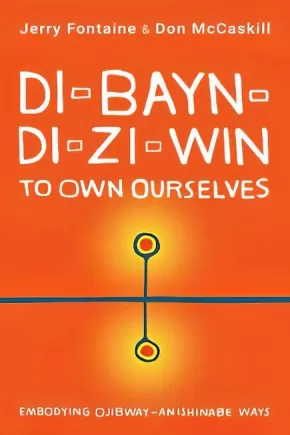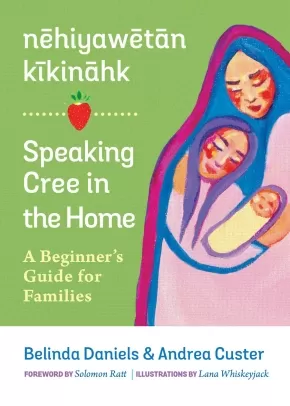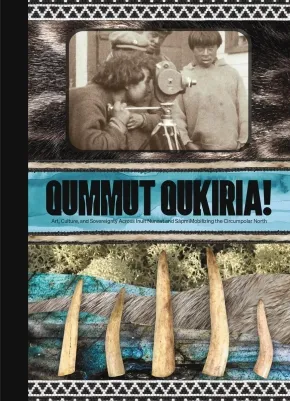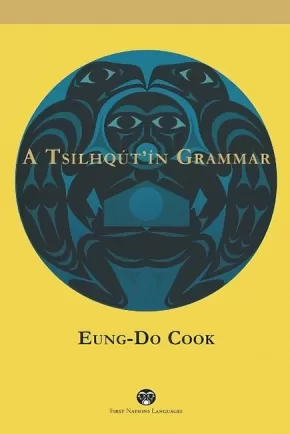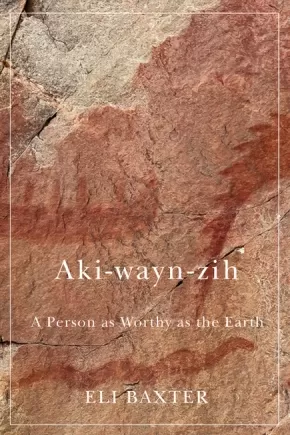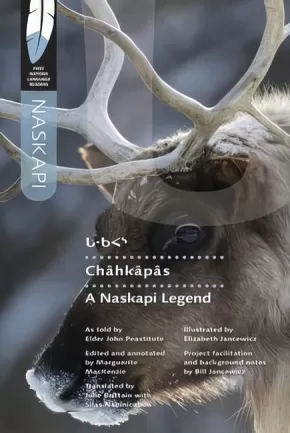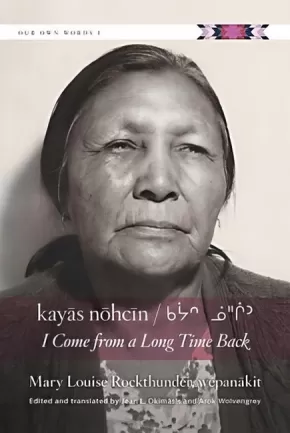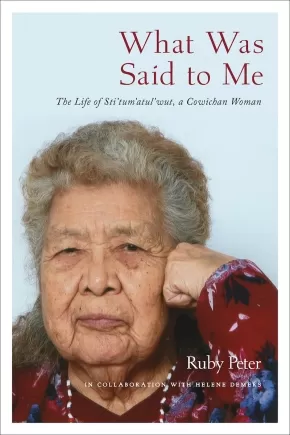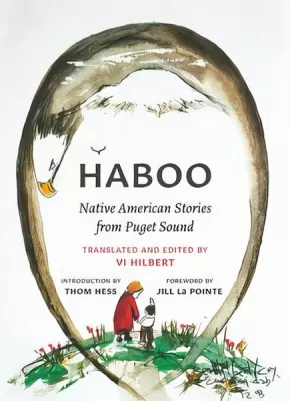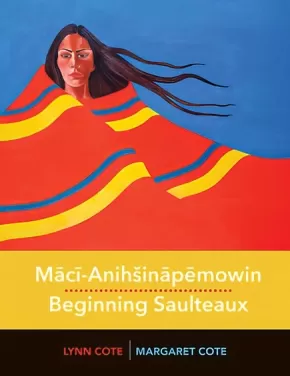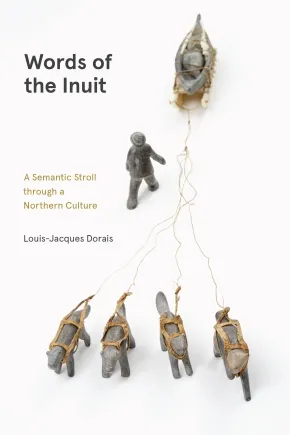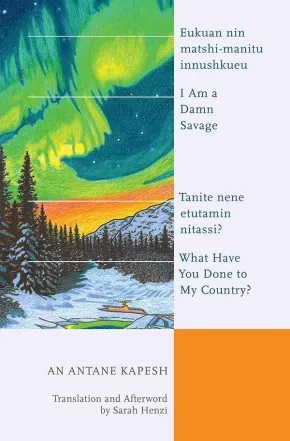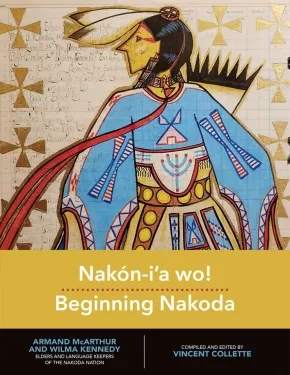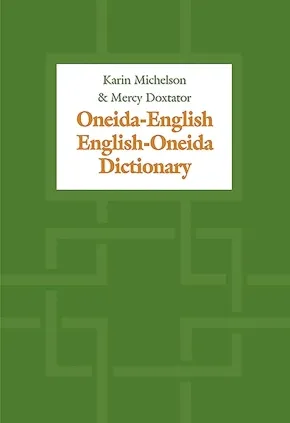
Language
16
-
30
of
58 Results;
Sort By
Go To
of 4
Di-bayn-di-zi-win (To Own Ourselves): Embodying Ojibway-Anishinabe Ways
$24.99
Format:
Paperback
Text Content Territories:
Indigenous Canadian; First Nations; Anishinaabeg; Ojibway;
Grade Levels: 12; University/College;
ISBN / Barcode: 9781459748996
Synopsis:
Synopsis:
A collaboration exploring the importance of the Ojibway-Anishinabe worldview, use of ceremony, and language in living a good life, attaining true reconciliation, and resisting the notions of indigenization and colonialization inherent in Western institutions.
Indigenization within the academy and the idea of truth and reconciliation within Canada have been seen as the remedy to correct the relationship between Indigenous Peoples and Canadian society. While honourable, these actions are difficult to achieve given the Western nature of institutions in Canada and the collective memory of its citizens, and the burden of proof has always been the responsibility of Anishinabeg.
Authors Makwa Ogimaa (Jerry Fontaine) and Ka-pi-ta-aht (Don McCaskill) tell their di-bah-ji-mo-wi-nan (Stories of personal experience) to provide insight into the cultural, political, social, and academic events of the past fifty years of Ojibway-Anishinabe resistance in Canada. They suggest that Ojibway-Anishinabe i-zhi-chi-gay-win zhigo kayn-dah-so-win (Ways of doing and knowing) can provide an alternative way of living and thriving in the world. This distinctive worldview — as well as Ojibway-Anishinabe values, language, and ceremonial practices — can provide an alternative to Western political and academic institutions and peel away the layers of colonialism, violence, and injustice, speaking truth and leading to true reconciliation.
Reviews
"Fontaine and McCaskill write in a way our own Indigenous People can understand and feel; their passion is tangible." — Graham Hingangaroa Smith, Distinguished Professor, Massey University - NZ
"There are multiple ways to inhabit our deepest principles. There are also many ways to honor land and our elders by embodying the teachings of both. Here is life found in kindness, loving, and truth. How do we access healing and how do we share this healing with others? Reading this book is one way. Tears of gratitude are for you both, Jerry Fontaine and Don McCaskill. Mahalo nui no ko ?ike nahenahe. Thank you for this mutual emergence shaped as much by friendship as it is by ?ike kupuna - elder knowledge. What is within these pages are ceremonial gifts offered to all who will take the time to connect with what is inevitable about our collective evolution." — Manulani Aluli Meyer, University of Hawai‘i
Additional Information
328 pages | 6.00" x 9.00" | Paperback
nēhiyawētān kīkināhk / Speaking Cree in the Home
$19.95
Artists:
Format:
Paperback
Text Content Territories:
Indigenous Canadian; First Nations; Cree (Nehiyawak);
Reading Level: N/A
ISBN / Barcode: 9780889779006
Synopsis:
Synopsis:
A hands-on guide for parents and caregivers to develop best practices in revitalizing and teaching Cree to young children.
In nēhiyawētān kīkināhk / Speaking Cree in the Home, Belinda Daniels and Andrea Custer provide an introductory text to help families immerse themselves, their children, and their homes in nēhiyawēwin—the Cree language.
Despite the colonial attacks on Cree culture, language, and peoples, Custer and Daniels remind readers that the traditional ways of knowing and transferring knowledge to younger generations have not been lost and can be revived in the home, around the table, every day.
nēhiyawētān kīkināhk / Speaking Cree in the Home is an approachable, hands-on manual that helps to re-forge connections between identity, language, family, and community—by centering Indigenous knowledge and providing Cree learners and speakers with a practical guide to begin their own journey of reclaiming and revitalizing Cree in the home.
Readers are guided through methods for language learning, the basics of reading Cree and Standard Roman Orthography, pronunciation of vowels, engaging language-learning games, and examples of high-frequency words and phrases that can easily be incorporated into daily routines and taught to children young and old.
Reviews
“This is a welcome book for all who are interested in learning the Cree language, either for themselves alone or for themselves and their families. The book offers good guidance on the best practices in language learning based on the authors’ personal experiences in their respective language journeys.” —Solomon Ratt, author of mâci-nêhiyawêwin / Beginning Cree
“A major contribution, this book will be a useful resource in Cree classes, at both high school and university levels. But it is also useful for home use, as it describes the practical application of speaking Cree in the home and provides in an easy-to-read format and details a hands-on approach too.” —Dorothy Thunder (Plains Cree, Little Pine First Nation), Faculty of Native Studies, University of Alberta
“The activity-based learning lessons that are presented here should serve as a model not only for teaching the language in a family setting, but in any other formal and informal settings, because they cover all aspects of teaching and learning; the content, variety of methods, appropriate timing and setting. . . . The pioneering in Cree language acquisition and revival has begun and hopefully this book reaches all interested individuals.” —Ken Paupanekis, author of Pocket Cree: A Phrasebook for Nearly All Occasions
Additional Information
122 pages | 4.72" x 7.27" | Paperback
Qummut Qukiria!: Art, Culture, and Sovereignty Across Inuit Nunaat and Sapmi: Mobilizing the Circumpolar North
$45.00
Editors:
Format:
Hardcover
Text Content Territories:
Indigenous Canadian; Inuit; Indigenous European; Greenlandic Inuit; Sami;
ISBN / Barcode: 9781773102245
Synopsis:
Synopsis:
Qummut Qukiria! celebrates art and culture within and beyond traditional Inuit and Sámi homelands in the Circumpolar Arctic — from the continuance of longstanding practices such as storytelling and skin sewing to the development of innovative new art forms such as throatboxing (a hybrid of traditional Inuit throat singing and beatboxing). In this illuminating book, curators, scholars, artists, and activists from Inuit Nunangat, Kalaallit Nunaat, Sápmi, Canada, and Scandinavia address topics as diverse as Sámi rematriation and the revival of the ládjogahpir (a Sámi woman’s headgear), the experience of bringing Inuit stone carving to a workshop for inner-city youth, and the decolonizing potential of Traditional Knowledge and its role in contemporary design and beyond.
Qummut Qukiria! showcases the thriving art and culture of the Indigenous Circumpolar peoples in the present and demonstrates its importance for the revitalization of language, social wellbeing, and cultural identity.
Educator Information
Qummut Qukiria! means "up like a bullet" in Inuktitut and is used to convey excitement and enthusiasm. It also signifies the connection to the land and nature's offerings in the Circumpolar North.
Features over 200 images as well as essays from artists, educators, and scholars on contemporary Inuit and Sámi life and art, including filmmaking, sculpture, storytelling, and design.
Additional Information
368 pages | 9.25" x 6.75" | Hardcover
A Tsilhqút’ín Grammar
$60.00
Format:
Paperback
Text Content Territories:
Indigenous Canadian; First Nations; Dene; Tsilhqot'in (Chilcotin);
ISBN / Barcode: 9780774865708
Synopsis:
Synopsis:
Tsilhqút’ín or Tsinlhqút’ín, also known as Chilcotin, is a northern Athabaskan language spoken by the people of the Chilco River (Tsilhqóx) in Interior British Columbia. This language is spoken by approximately 2,000 adults in six reserves, and both spoken and written forms are taught as part of school curricula. Until now, the literature on Tsilhqút’ín contained very little description of the language. With forty-seven consonants and six vowels plus tone, the phonological system is notoriously complex.
This book is the first comprehensive grammar of Tsilhqu´t’i´n. It covers all aspects of linguistic structure -- phonology, morphology, and syntax -- including negation and questions. Also included are three stories passed down by Tsilhqút’ín elders Helena Myers (translated by Maria Myers), William Myers, and Mabel Alphonse (translated by Bella Alphonse), which are annotated with linguistic analysis. The product of decades of work by linguist Eung-Do Cook, A Tsilhqút’ín Grammar makes an important contribution to the ongoing documentation of Athabaskan languages.
This book will be relevant to scholars of Tsilhqút’ín and of other Athabaskan languages, linguists in a range of topics (phonology, morphology, syntax, and semantics, as well as comparative and historical linguistics), and members of the Tsilhqút’ín First Nations.
Educator Information
Includes Indigenous contributions.
Table of Contents
Abbreviations and Symbols
Introduction
1 Sound System and Orthography
2 Words and Their Categories
3 Organization of the Verb
4 Theme Categories and Other Verb Classes
5 Simple Sentences
6 Complex Sentences
7 Movement and Other Syntactic Rules
8 Negation
9 Questions
10 Reference to Third Person and Morphosyntactic Problems
Appendix: Three Annotated Texts
References Cited
Additional Information
670 pages | 6.00" x 9.00" | Paperback
Authenticity Note: Because of the story contributions from Tsilhqút’ín elders, this book has received our Authentic Indigenous Text label. But, the author, linguist Eung-Do Cook, is not Indigenous. It is up to readers to determine if this will work as an authentic resource for their purposes.
Aki-wayn-zih: A Person as Worthy as the Earth
$27.95
Format:
Hardcover
Text Content Territories:
Indigenous Canadian; First Nations; Anishinaabeg; Ojibway;
Reading Level: N/A
ISBN / Barcode: 9780228008071
Synopsis:
Synopsis:
One man’s story of growing up in the hunting and gathering society of the Ojibways and surviving the residential school system, woven together with traditional legends in their original language.
Members of Eli Baxter’s generation are the last of the hunting and gathering societies living on Turtle Island. They are also among the last fluent speakers of the Anishinaabay language known as Anishinaabaymowin. Aki-wayn-zih is a story about the land and its spiritual relationship with the Anishinaabayg, from the beginning of their life on Miss-koh-tay-sih Minis (Turtle Island) to the present day. Baxter writes about Anishinaabay life before European contact, his childhood memories of trapping, hunting, and fishing with his family on traditional lands in Treaty 9 territory, and his personal experience surviving the residential school system. Examining how Anishinaabay Kih-kayn-daa-soh-win (knowledge) is an elemental concept embedded in the Anishinaabay language, Aki-wayn-zih explores history, science, math, education, philosophy, law, and spiritual teachings, outlining the cultural significance of language to Anishinaabay identity. Recounting traditional Ojibway legends in their original language, fables in which moral virtues double as survival techniques, and detailed guidelines for expertly trapping or ensnaring animals, Baxter reveals how the residential school system shaped him as an individual, transformed his family, and forever disrupted his reserve community and those like it. Through spiritual teachings, historical accounts, and autobiographical anecdotes, Aki-wayn-zih offers a new form of storytelling from the Anishinaabay point of view.
Reviews
"Aki-wayn-zih will educate not only Canadians but the world as to what my people went through during this tragic part of history. I recommend this book wholeheartedly, and I hope that it inspires our young people and the public to learn more about Indigenous Peoples, our history, and why we remain strong in our culture, our languages, our lands, and our nations." — David Paul Achneepineskum, Matawa First Nations
"Eli Baxter eloquently weaves us through his life on the land. This is not just a book, but also a record of Anishinaabay customs and beliefs. What also makes this an incredible treasure is the fact that it is expressed in the language. No doubt a language resource for many generations to come, the information in this book is sacred and will transform lives." — Isaac Murdoch, Onaman Collective
"I truly enjoyed reading this book: its way of storytelling drew me in from the opening page. Aki-wayn-zih sets up the storytelling approach of the Anishinaabay language, offering important teachings in a subtle way, and bringing in a strongly experientially grounded sense of the language and its importance for healing and connecting with the spirit of land relations." — Timothy Brian Leduc, Wilfrid Laurier University and author of A Canadian Climate of Mind: Passages from Fur to Energy and Beyond
"Aki-wayn-zih will help many North American settlers and immigrants understand the history of the Anishinaabay people and the land that now sustains all of us. This book is eloquent and well written and offers perspectives that range from supporting dominant narratives to providing important contrasting views. It is clearly the work of an articulate storyteller respected in and beyond his community." — Margaret Ann Noodin, University of Wisconsin–Milwaukee and author of What the Chickadee Knows
Additional Information
160 pages | 5.50" x 8.50" | 5 photos, 1 map | Hardcover
Châhkâpâs: A Naskapi Legend
$24.95
Artists:
Editors:
Format:
Paperback
Text Content Territories:
Indigenous Canadian; First Nations; Innu (Montagnais-Naskapi);
Grade Levels: 12; University/College;
ISBN / Barcode: 9780889778290
Synopsis:
Synopsis:
Châhkâpâs: A Naskapi Legend shares the story of Châhkâpâs, a heroic figure in First Nations storytelling, who performs feats of strength and skill in spite of his diminutive size.
The book shares this traditional legend as originally recorded in the Naskapi community in northern Quebec in 1967 when it was narrated by John Peastitute, a Naskapi Elder and accomplished storyteller. Transcribed in the Naskapi language and syllabic orthography, the book offers a literary resource for the Naskapi language community, and the English translation enables those unfamiliar with the language, or the story, to discover this important legend.
The book also contains extensive analysis of stories about Châhkâpâs, notes about the provenance of the recordings, a biography of the storyteller, and a history of the Naskapi people. Lavish illustrations from Elizabeth Jancewicz—an artist raised in the Naskapi community—provide a sensitive and accurate graphical account of the legend, which has also been approved by Naskapi speakers themselves.
Educator & Series Information
This book is part of the First Nation Language Readers series. With a mix of traditional and new stories, each First Nations Language Reader introduces an Indigenous language and demonstrates how each language is used today.
By John Peastitute
Edited by Marguerite MacKenzie
Translated by Julie Brittain and Silas Nabinicaboo
Illustrated by Elizabeth Jancewicz
Contributions by Bill Jancewicz
Additional Information
264 pages | 6.00" x 9.00" | Paperback
kayas nohcın / ᑲᔮᐢ ᓅᐦᒌᐣ: I Come from a Long Time Back
$24.95
Format:
Paperback
Text Content Territories:
Indigenous Canadian; First Nations; Anishinaabeg; Ojibway; Saulteaux; Cree (Nehiyawak); Stoney-Nakoda (Nakota);
Grade Levels: University/College;
ISBN / Barcode: 9780889778368
Synopsis:
Synopsis:
A collection of narratives as told in the nêhiyawêwin (Cree) language by Elder Mary Louise Rockthunder, spanning her rich life and extensive knowledge of her traditions and culture.
Mary Louise (née Bangs) Rockthunder, wêpanâkit, was an Elder of Cree, Saulteaux, and Nakoda descent. Born in 1913, raised and married at nēhiyawipwātināhk / Piapot First Nation, Mary Louise, a much-loved storyteller, speaks of her memories, stories, and knowledge, revealing her personal humility and her deep love and respect for her family and her nêhiyawêwin language and culture.
The recordings that are transcribed, edited, and translated for this book are presented in three forms: Cree syllabics, standard roman orthography (SRO) for Cree, and English. A full Cree-English glossary concludes the book, providing an additional resource for those learning the nêhiyawêwin language.
Educator & Series Information
This book is part of the Our Own Words series. Our Own Words is a new Indigenous language series that seeks to present longer, more extensive Indigenous texts for both intermediate and advanced learners of the language.
Additional Information
264 pages | 6.00" x 9.00" | Translated by Jean L. Okimasis and Arok Wolvengrey | Paperback
What Was Said to Me: The Life of Sti'tum'atul'wut, a Cowichan Woman
$24.95
Format:
Paperback
Text Content Territories:
Indigenous Canadian; First Nations; Salish; Coast Salish; Cowichan;
Grade Levels: 12; University/College;
ISBN / Barcode: 9780772679383
Synopsis:
Synopsis:
A narrative of resistance and resilience spanning seven decades in the life of a tireless advocate for Indigenous language preservation.
Life histories are a form of contemporary social history and convey important messages about identity, cosmology, social behaviour and one’s place in the world. This first-person oral history—the first of its kind ever published by the Royal BC Museum—documents a period of profound social change through the lens of Sti’tum’atul’wut—also known as Mrs. Ruby Peter—a Cowichan elder who made it her life’s work to share and safeguard the ancient language of her people: Hul’q’umi’num’.
Over seven decades, Sti’tum’atul’wut mentored hundreds of students and teachers and helped thousands of people to develop a basic knowledge of the Hul’q’umi’num’ language. She contributed to dictionaries and grammars, and helped assemble a valuable corpus of stories, sound and video files—with more than 10,000 pages of texts from Hul’q’umi’num’ speakers—that has been described as “a treasure of linguistic and cultural knowledge.” Without her passion, commitment and expertise, this rich legacy of material would not exist for future generations.
In 1997 Vancouver Island University anthropologist Helene Demers recorded Sti’tum’atul’wut’s life stories over nine sessions. The result is rich with family and cultural history—a compelling narrative of resistance and resilience that promises to help shape progressive social policy for generations to follow.
Additional Information
240 pages | 6.00" x 9.00"
Haboo: Native American Stories from Puget Sound - 2nd Edition
$41.00
Editors:
Format:
Paperback
Text Content Territories:
Indigenous American; Native American; Salish; Coast Salish; Upper Skagit;
ISBN / Barcode: 9780295746968
Synopsis:
Synopsis:
The stories of the Lushootseed-speaking people of Puget Sound represent an important part of the oral tradition by which one generation hands down beliefs, values, and customs to another. Vi Hilbert grew up when many of the old social patterns survived and everyone spoke the ancestral language.
Haboo, Hilbert’s collection of thirty-three stories, features tales mostly set in a time before the world transformed. Animals, plants, trees, and even rocks had human attributes. Prominent characters like Wolf, Salmon, and Changer and tricksters like Mink, Raven, and Coyote populate humorous, earthy stories that reflect foibles of human nature, convey serious moral instruction, and comically detail the unfortunate, even disastrous consequences of breaking taboos.
Beautifully redesigned and with a new foreword by Jill La Pointe, Haboo offers a vivid and invaluable resource for linguists, anthropologists, folklorists, future generations of Lushootseed-speaking people, and others interested in Native languages and cultures.
Reviews
"The wisdom and teachings found in Haboo continue to offer a . . . resource that highlights a way of being in the world that we have strayed from, and they remain as relevant today as they have been for generations." - from the foreword by Jill La Pointe
Additional Information
232 pages | 6.50" x 9.00" | 20 b&w illustrations, 1 map | Translated and Edited by Val Hilbert, Foreword by Jill La Pointe, Introduction by Thom Hess | 2nd Edition
Mācī-Anihšināpēmowin / Beginning Saulteaux (10 in Stock) - ON SALE
$30.00 $34.95
Format:
Coil Bound
Text Content Territories:
Indigenous Canadian; First Nations; Anishinaabeg; Ojibway; Saulteaux;
ISBN / Barcode: 9780889777514
Synopsis:
Synopsis:
Mācī-Anihšināpēmowin / Beginning Saulteaux is an introductory look at one of the most widely spoken of all North American Indigenous languages, regionally known as Saulteaux, Ojibway, Ottawa (Odawa), Chippewa, and Algonquian. In an easy-to-use and easy-to-read series of lessons, both designed for self-study or for use in the classroom, Beginning Saulteaux will guide beginners through the language’s grammatical structures and spelling systems, as well as everyday terms and phrases. The book grounds the language in both traditional and contemporary contexts, and sheds light on the Saulteaux world view. For example, there is no word for good-bye in the language, so upon parting people will usually say Kika-wāpamin mīnawā, meaning “I’ll see you again.”
Educator & Series Information
The third in our Indigenous Languages for Beginners series, Beginning Saulteaux is an invaluable resource produced in consultation with Elders, Language Keepers, and community members, and continues our commitment to revitalizing Indigenous languages.
Additional Information
304 pages | 8.50" x 11.00" | Spiral Bound
Words of the Inuit: A Semantic Stroll through a Northern Culture
$31.95
Format:
Paperback
Text Content Territories:
Indigenous Canadian; Inuit;
Grade Levels: University/College;
ISBN / Barcode: 9780887558627
Synopsis:
Synopsis:
Words of the Inuit is an important compendium of Inuit culture illustrated through Inuit words. It brings the sum of the author’s decades of experience and engagement with Inuit and Inuktitut to bear on what he fashions as an amiable, leisurely stroll through words and meanings.
Inuit words are often more complex than English words and frequently contain small units of meaning that add up to convey a larger sensibility. Dorais’ lexical and semantic analyses and reconstructions are not overly technical, yet they reliably evince connections and underlying significations that allow for an in-depth reflection on the richness of Inuit linguistic and cultural heritage and identity. An appendix on the polysynthetic character of Inuit languages includes more detailed grammatical description of interest to more specialist readers.
Organized thematically, the book tours the histories and meanings of the words to illuminate numerous aspects of Inuit culture, including environment and the land; animals and subsistence activities; humans and spirits; family, kinship, and naming; the human body; and socializing with other people in the contemporary world. It concludes with a reflection on the usefulness for modern Inuit—especially youth and others looking to strengthen their cultural identity —to know about the underlying meanings embedded in their language and culture.
With recent reports alerting us to the declining use of the Inuit language in the North, Words of the Inuit is a timely contribution to understanding one of the world’s most resilient Indigenous languages.
Reviews
"Professor Dorais once again provides expert information and insight into the Inuit language and culture as only he can. This book is written so that academics, Inuit and the public can all learn more about the people who live in Canada’s most northern region. By examining the rich meanings contained within words of Inuktitut, Dorais details social nuances and core aspects of both traditional and modern Inuit culture.”— Alana Johns
Educator Information
Table of Contents
Introduction: Words from the Past, A Stroll Through Inuit Semantics
Ch. 1: Words for Speaking About the Environment and Land
Ch. 2: Words for Speaking About Animals and Subsistence Activities
Ch. 3: Words for Speaking About Humans and Animals
Ch. 4: Words for Speaking About Family, Kinship, and Naming
Ch. 5: Words for Speaking About the Human Body
Ch. 6: Words for Socializing in the Contemporary World
Conclusion: Words for the Future
Additional Information
344 pages | 6.00" x 9.00" | 2 maps, 2 figures, bibliography
I Am a Damn Savage; What Have You Done to My Country?
$22.99
Format:
Paperback
Text Content Territories:
Indigenous Canadian; First Nations; Innu (Montagnais-Naskapi);
Grade Levels: University/College;
ISBN / Barcode: 9781771124089
Synopsis:
Synopsis:
Quebec author An Antane Kapesh's two books, Je suis une maudite sauvagesse (1976) and Qu'as-tu fait de mon pays? (1979), are among the foregrounding works by Indigenous women in Canada. This English translation of these works, presented alongside the revised Innu text, makes them available for the first time to a broader readership.
In I Am a Damn Savage, Antane Kapesh wrote to preserve and share her culture, experience, and knowledge, all of which, she felt, were disappearing at an alarming rate because many Elders – like herself – were aged or dying. She wanted to publicly denounce the conditions in which she and the Innu were made to live, and to address the changes she was witnessing due to land dispossession and loss of hunting territory, police brutality, and the effects of the residential school system. What Have You Done to My Country? is a fictional account by a young boy of the arrival of les Polichinelles and their subsequent assault on the land and on native language and culture.
Through these stories Antane Kapesh asserts that settler society will eventually have to take responsibility and recognize its faults, and accept that the Innu – as well as all the other nations – are not going anywhere, that they are not a problem settlers can make disappear.
Additional Information
216 pages | 5.25" x 8.00" | Translation and Afterword by Sarah Henzi
Métis Politics and Governance in Canada
$32.95
Format:
Paperback
Text Content Territories:
Indigenous Canadian; Métis;
Grade Levels: University/College;
ISBN / Barcode: 9780774860765
Synopsis:
Synopsis:
At a time when the Métis are becoming increasingly visible on Canada’s political scene, Métis Politics and Governance in Canada offers a novel and practical guide to understand who the Métis are, how they govern themselves, and the challenges they face on the path to self-government.
The Métis have always been a political people. With the culmination of the North-West Resistance in 1885 and the hanging of their spiritual and political leader, Louis Riel, the Métis continued to take political action to give life to Riel’s vision of a self-governing Métis Nation in Canada.
Drawing on interviews with elders, leaders, and community members, Kelly Saunders and Janique Dubois reveal how the Métis have adapted their governance structures in accordance with their way of life as a distinct, rights-bearing Indigenous people. They look to the Métis language – Michif – to identify Métis principles of governance that emerged during the fur trade and that continue to shape Métis governance structures. Both then and now, the Métis continue to negotiate their place alongside federal and provincial partners in Confederation.
As Canada engages in nation-to-nation relationships to advance reconciliation, this book provides timely insight into the Métis Nation’s ongoing struggle to remain a free and self-governing Indigenous people.
This book will appeal to anyone interested in the Métis Nation and Indigenous self-government, including scholars in Political Science, Indigenous Studies, and Public Policy as well as government officials and the general public.
Reviews
"Métis Politics and Governance in Canada explores an aspect of Métis existence in Canada that has been neglected for far too long: the workings of contemporary Métis political organizations at the provincial and national levels. It is a must-read for anyone interested in Métis political organizing, leadership, representation, and the values inherent in Métis political activity." - Joe Sawchuk, co-author of From New Peoples to New Nations: Aspects of Métis History and Identity from the Eighteenth to the Twenty-First Centuries
"Unlike other academic works that simply look at the Métis Nation’s self-government as frozen in time and tied to 1869/70 or 1885, this book compellingly tells the “rest of the story” up to the present day. Uniquely, it also looks to the Métis Nation’s own language – Michif – to identify and understand key principles of Métis governance that continue to today. This book is essential reading for those who want to better understand the current state of Métis Nation self-government in Canada." - Jason Madden, co-managing partner of Pape Salter Teillet LLP
Additional Information
220 pages | 5.50" x 8.50"
Nakón-i'a wo! Beginning Nakoda
$34.95
Editors:
Format:
Coil Bound
Text Content Territories:
Indigenous Canadian; First Nations; Assiniboine (Nakoda Oyadebi);
ISBN / Barcode: 9780889776623
Synopsis:
Synopsis:
Nakón-i'a wo! Beginning Nakoda is a language resource designed to help revitalize and document Nakoda, now spoken in Manitoba and Saskatchewan.
Written for beginning learners of Nakoda (also known as Assiniboine), this workbook, arranged thematically, provides a Nakoda/English lexicon, a vocabulary, a table of kinship terms, a glossary of linguistic terminology, and exercises to do after each lesson.
This book was made possible with the assistance of Elders and Language Keepers of the Nakoda Nation: Armand McArthur and Wilma Kennedy, Main Consultants; with additional contributions by Pete Bigstone, Leona Kroscamp, Freda O'Watch, and Ken Armstrong.
Educator & Series Information
Recommended for Grades 7+
Part of the Indigenous Languages for Beginners series.
Additional Information
304 pages | 8.50" x 11.00" | Black and white illustrations throughout
Oneida-English/English-Oneida Dictionary
$163.00
Format:
Paperback
Text Content Territories:
Indigenous Canadian; First Nations; Haudenosaunee (Iroquois); Oneida (Onyota'a:ka);
Grade Levels: University/College;
ISBN / Barcode: 9781487525170
Synopsis:
Synopsis:
Oneida is an endangered Iroquoian language spoken fluently by fewer than 250 people. This is the first comprehensive dictionary of the Oneida language as used in Ontario, where most of the surviving speakers reside.
The dictionary contains both Oneida-English and English-Oneida sections. The Oneida-English portion includes some 6000 entries, presenting lexical bases, particles and grammatical morphemes. Each entry for a base shows several forms; illustrates inflection, meaning and use; and gives details regarding pronunciation and cultural significance. The English-Oneida entries direct the reader to the relevant base in the Oneida-English section, where technical information is provided. Completing the volume is a set of appendices that organizes Oneida words into thematic categories.
The Iroquoian languages have an unusually complex word structure, in which lexical bases are surrounded by layers of prefixes and suffixes. This dictionary presents and explains that structure in the clearest possible terms. A work of enormous precision and care, it incorporates many innovative ideas and shows a deep understanding of the nature of the Oneida language.
Reviews
"The format of the entries and the amount of information provided is impressive indeed. The system of cross-references connects entries to one another in a web of lexical relationships that brilliantly displays the nature of the Oneida lexicon – these entries are treasure-troves!" Hanni Woodbury, author of A Reference Grammar of the Onondaga Language
Additional Information
1410 pages | 6.70" x 10.00"
Sort By
Go To
of 4

